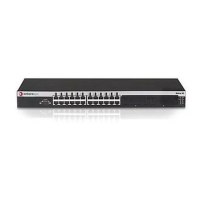clear system login
5-8 Setting User Accounts and Passwords
This example enables a new user account named “guest” with read-only privileges and allows
access only on Mondays through Fridays.
C3(su)->set system login guest read-only enable allowed-days Mon Tue Wed Thu Fri
clear system login
Use this command to remove a local login user account.
Syntax
clear system login username [allowed-interval] [allowed-days] [local-only]
[aging] [simultaneous-logins]
Parameters
Defaults
The user account is removed if no optional parameters are specified.
Mode
Switch command, super user.
Usage
This command supports the deletion of the default admin account, but prevents the deletion of
the last remaining super-user account (that is, a super-user account must be created before the
admin account can be deleted).
If the security mode is C2, the last remaining super-user account must also be set as the emergency
access user in order to allow the default admin account to be deleted. See “set system lockout” on
page 5-18 for information about setting the emergency access user.
Example
This example shows how to remove the “netops” user account:
C3(su)->clear system login netops
username Specifies the login name of the account to be cleared.
Note: The default admin (su) account can be deleted only if another super-user
account has already been created. If security mode is C2, the additional super-
user account must also be set as the emergency access user with the set system
lockout command.
allowed-interval (Optional) Return the allowed interval to the default value of 0, meaning
no interval is applied to the specified user account.
allowed-days (Optional) Return the allowed days to the default value of 0, meaning all
days are allowed for the specified user account.
local-only (Optional) Return the authentication scope for this user to the default
value of no, meaning that authentication is by way of configured
methods.
aging (Optional) Returns the number of days to age the password to 0.
simultaneous-
logins
(Optional) Returns the number of simultaneous logins by the specified
user account to the default of 0, meaning that the number is limited only
to the number of sessions supported by the platform.

